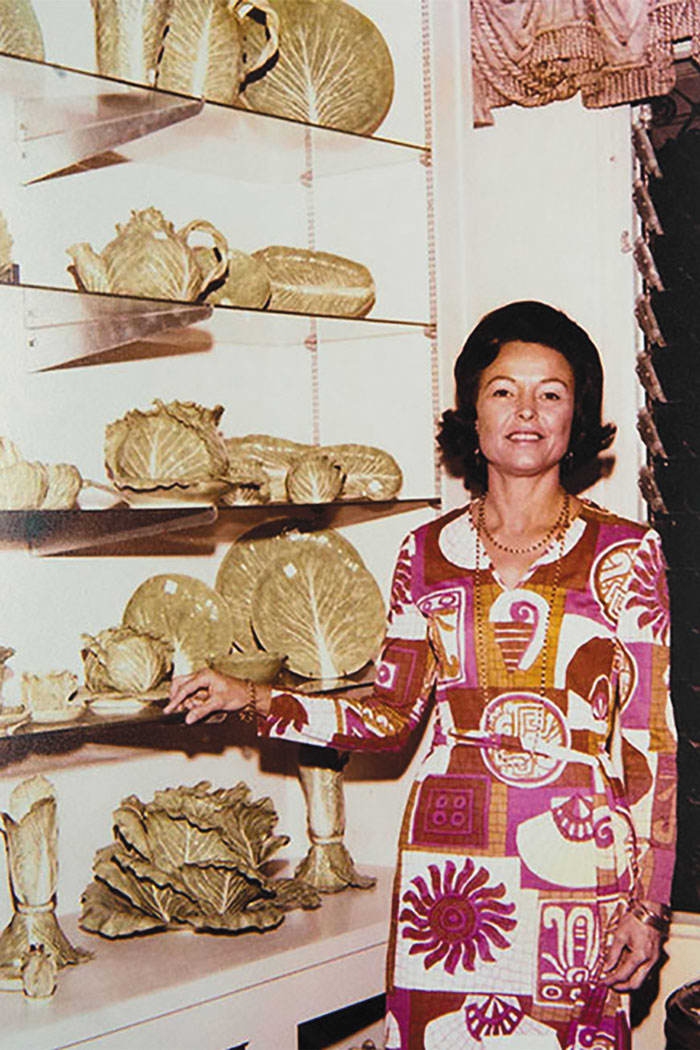when Frank and Barbara Sinatra threw dinner parties, you might think their guests ate off fancy plates gilded in gold or perhaps antique Meissen pieces. But they set their table with whimsical dinnerware that looked like lettuce.
The Sinatras were avid collectors of Dodie Thayer’s lettuce ware and frequently used it for entertaining. Their whopping 307-piece set, including plates, platters, tureens, bowls, candlesticks, and teapots, sold at Sotheby’s in 2018 for $37,500.

Frank and Barbara Sinatra were Dodie Thayer lettuce ware enthusiasts.
Michael Ochs Archives/Getty Images
Mrs. Sinatra had acquired the dinner service directly from Thayer by traveling to Palm Beach, Florida, the glitzy town Thayer’s ancestors helped settle and where her lettuce ware had a cult following.
Known as the “Pottery Queen of Palm Beach,” Thayer modestly began her hobby in the 1960s, teaching herself how to mold clay from lettuce and cabbage leaves. She made each piece of her lettuce ware in all of its green ruffled glory by hand in her home workshop.
The Sinatras weren’t the only notable collectors taken with her pottery. Jacqueline Kennedy Onassis, the Duchess of Windsor, Brooke Astor, C.Z. Guest, and other famous socialites were also fans. According to The Palm Beach Post, Queen Elizabeth II even ate lunch on a set of specialty lettuce ware when she visited a Kentucky horse farm in 1986.
Thayer was continuing an artistic tradition that goes back centuries. Crafting dishes in homage to leafy greens dates to 18th-century Europe when factories made porcelain and faience pieces in lettuce’s likeness. In the 19th and 20th centuries, examples were made by majolica factories in Europe; in Italy, the E B Napoli Studio produced apple-green lettuce ware known as “Napoli ware.” Portuguese political cartoonist and ceramicist Raphael Bordallo Pinheiro also famously made cabbage and lettuce pieces of glazed earthenware in the 1880s to symbolize Portugal’s rustic traditions. The Bordallo Pinheiro factory still makes the popular pieces today, which can be bought at us.bordallopinheiro.com.
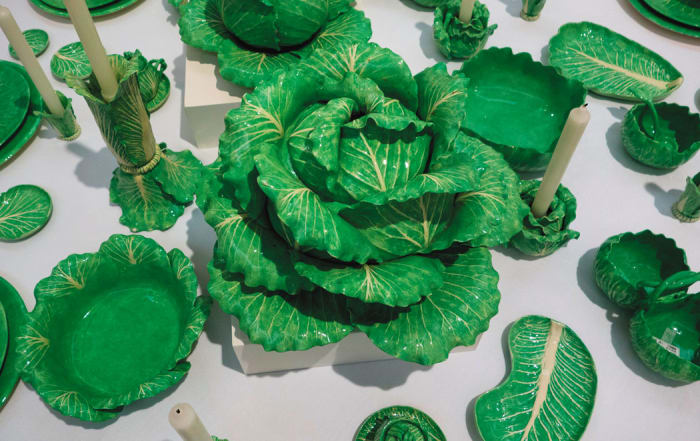
Frank and Barbara Sinatra’s Dodie Thayer lettuce ware collection at Sotheby’s in 2018.undefined
DON EMMERT/AFP via Getty Images
Inspired by this work, especially Napoli ware, Thayer designed her version of lettuce dishes for modern mid-century tables. Every piece reportedly took her two weeks to handcraft. Her lettuce ware is humorous and offbeat, and many collectors value it just for decorative purposes, but it is also well made and durable.
Au Bon Gout, a boutique in Palm Beach, sold her wares, and hostesses soon began harvesting them from shelves for their swanky dinner parties. Owning a complete set of Dodie Thayer lettuce ware was a status symbol for Palm Beach’s affluent. It didn’t matter how famous or wealthy a client was, the waiting list could be months or sometimes years for finished pieces.
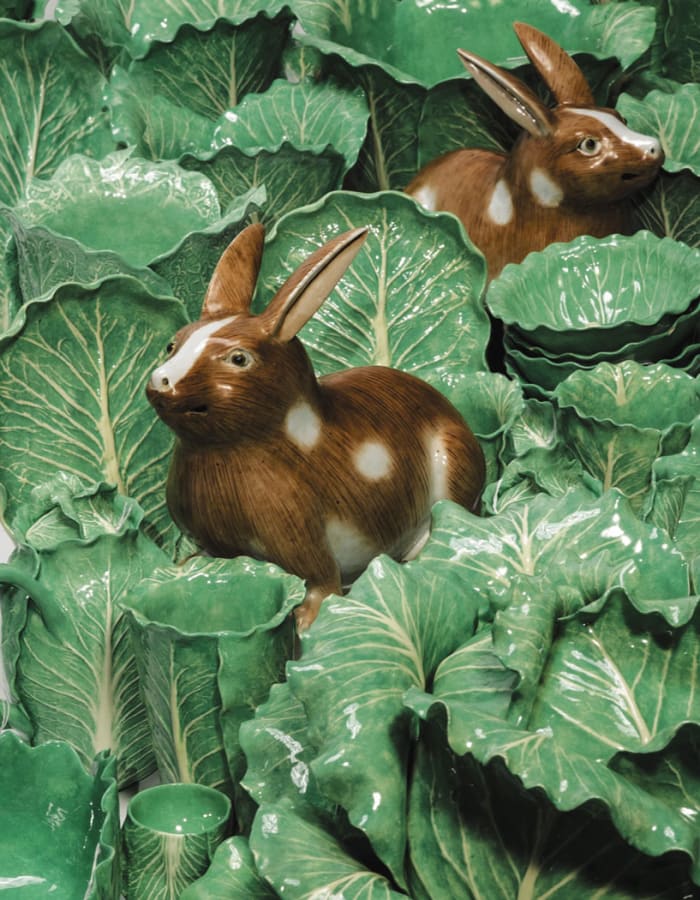
Ceramic rabbits amid ceramic lettuce ware belonging to interior designer Mario Buatta sold for $60,000 at Sotheby’s in 2020.
Courtesy of Sotheby’s
Thayer never expanded the size of her business and continued to make each piece by hand until she retired in the 1980s. She died in 2018 at age 92, but the legacy of her lettuce ware lives on.
The value of her pottery has soared in recent years, and it commands a lot of green at auction, especially sets. A personal 107-piece set owned by the late and renowned interior designer Mario Buatta sold for $60,000 at Sotheby’s in 2020 against an estimate of $10,000-$15,000. A few months later, an extensive service of 141 pieces sold at the auction house for $138,600, skyrocketing past the estimated $15,000-$20,000.
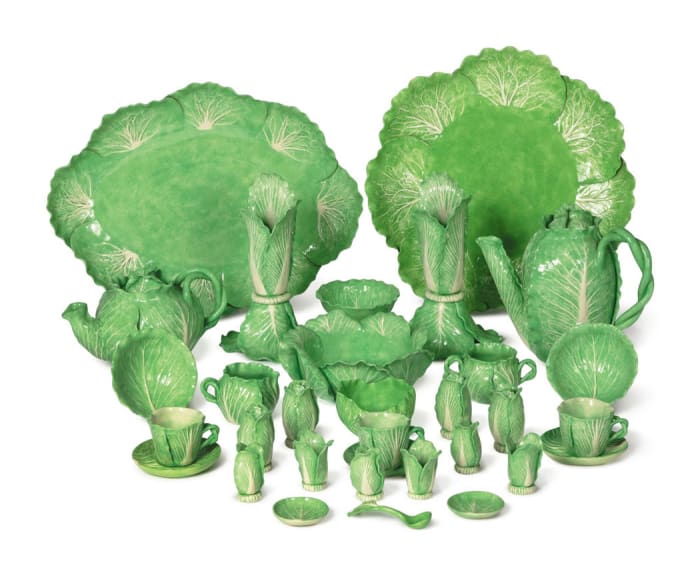
Items from a 141-piece set that sold at Sotheby’s for $138,600. The group includes platters, bowls, salt and pepper shakers, flower holders and cigarette lighters.
Courtesy of Sotheby’s
Sotheby’s has sold several other high-profile lots: in 2012, Astor’s 218-piece collection fetched $74,500; in 2015, four lots once owned by philanthropist Mary Sayles Booker Braga sold for $76,875; and nine lots of Guest’s lettuce wear sold for $112,875, also in 2015.
Of course, provenance does affect value, and collectors can expect to pay more for pieces that once sat on a famous socialite’s table. But other individual pieces can also sell for thousands, especially tureens in the shape of full blooming lettuce heads that were once $125 in the mid-1960s. This past April, a tureen and underplate from 1974 sold at Link Auction Galleries for $9,000. Three others have also sold this year for $2,800, $3,250 and $6,500.
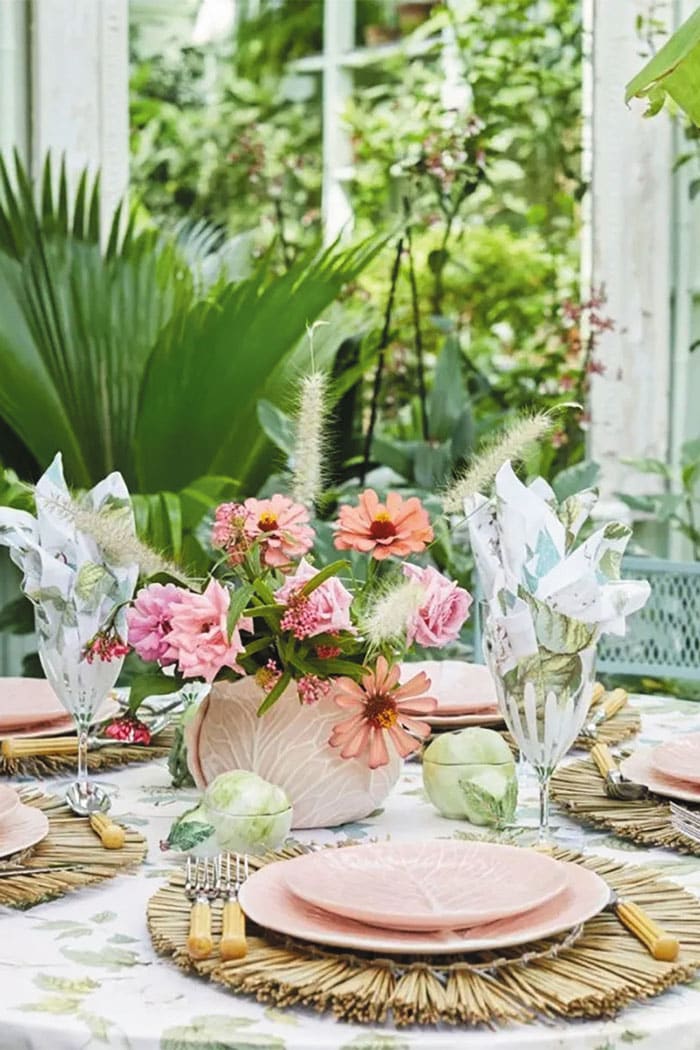
A Dodie Thayer for Tory Burch pink lettuce ware place setting, with the tureen pulling double duty as a flower vase.
Courtesy of Tury Burch
Some other individual pieces of Thayer’s lettuce ware can be more affordable. Depending on their condition, small plates and saucers can start at about $200.
As with most collectibles, the condition is crucial, and collectors should try and buy pieces as pristine as possible. Still, small chips are common, especially on more significant pieces like tureens with bigger leaves that curl outward and are more susceptible to damage.
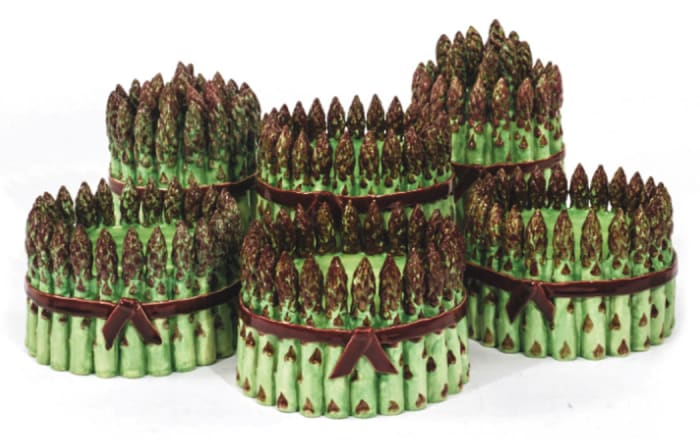
A rare Mafra Palissy majolica lettuce-ware coffee pot with snake spout, handle and base, 11” h; $950.
Courtesy of Sotheby’s
Some Thayer lettuce ware pieces can be had for under $100: reproductions she gave her blessing to. After fashion designer Tory Burch approached her in 2013 about collaborating, Thayer agreed to produce a line for her mid-luxury label.
After reportedly receiving a small jewelry dish as a Christmas gift, Burch got hooked on collecting Thayer’s lettuce ware herself. She worked with Thayer and her family for two years to produce the Dodie Thayer for Tory Burch collection. Pieces are available in green, pink and white and range in price from $78 for candle holders and salt cellars to $358 for tureens — a price that seems a bargain compared to what these pieces can sell for at auction.
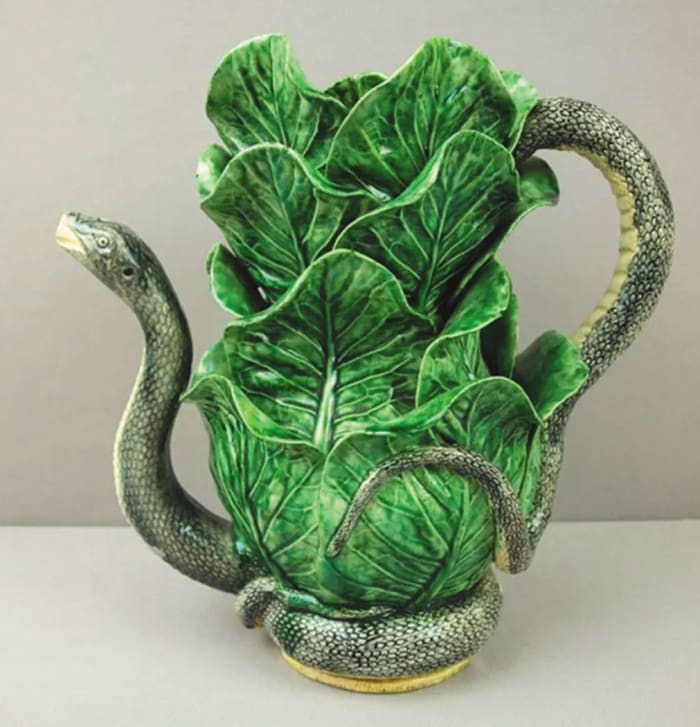
Thayer occasionally strayed from lettuce and made other vegetables, such as these asparagus pieces that sold in 2015 for $13,750, way above the estimate of $500-$700.
Courtesy of Strawser Auction Group
The lettuce ware, which also includes hors d’oeuvres bowls, crudite dishes, and pitchers, is at toryburch.com.
Whether its collectors enjoying their vintage pieces or new buyers snapping up the reproductions, lettuce ware has returned in recent years. It adds freshness to a tablespace or shelf it’s displayed on and is earning new fans who want a fun and stylish way to get their daily greens.


